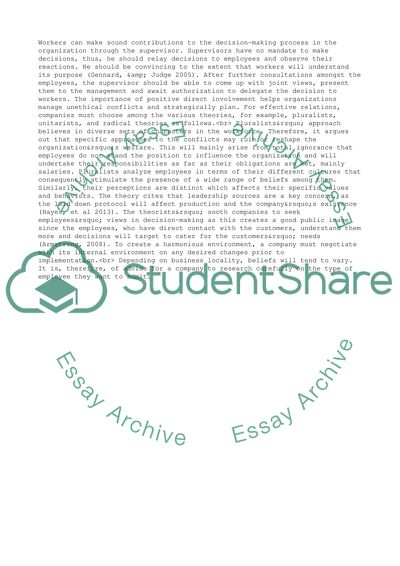Cite this document
(Employment Relations in an Organization Case Study, n.d.)
Employment Relations in an Organization Case Study. Retrieved from https://studentshare.org/management/1783255-explore-the-employment-relationship-in-an-organisation-you-work-for-identify-the-employee-relations-approach-unitarist-or-pluralist-that-is-adopted-by-management-and-then-evaluate-the-consequences-of-its-implementation-compared-to-the-alternative-app
Employment Relations in an Organization Case Study. Retrieved from https://studentshare.org/management/1783255-explore-the-employment-relationship-in-an-organisation-you-work-for-identify-the-employee-relations-approach-unitarist-or-pluralist-that-is-adopted-by-management-and-then-evaluate-the-consequences-of-its-implementation-compared-to-the-alternative-app
(Employment Relations in an Organization Case Study)
Employment Relations in an Organization Case Study. https://studentshare.org/management/1783255-explore-the-employment-relationship-in-an-organisation-you-work-for-identify-the-employee-relations-approach-unitarist-or-pluralist-that-is-adopted-by-management-and-then-evaluate-the-consequences-of-its-implementation-compared-to-the-alternative-app.
Employment Relations in an Organization Case Study. https://studentshare.org/management/1783255-explore-the-employment-relationship-in-an-organisation-you-work-for-identify-the-employee-relations-approach-unitarist-or-pluralist-that-is-adopted-by-management-and-then-evaluate-the-consequences-of-its-implementation-compared-to-the-alternative-app.
“Employment Relations in an Organization Case Study”, n.d. https://studentshare.org/management/1783255-explore-the-employment-relationship-in-an-organisation-you-work-for-identify-the-employee-relations-approach-unitarist-or-pluralist-that-is-adopted-by-management-and-then-evaluate-the-consequences-of-its-implementation-compared-to-the-alternative-app.


